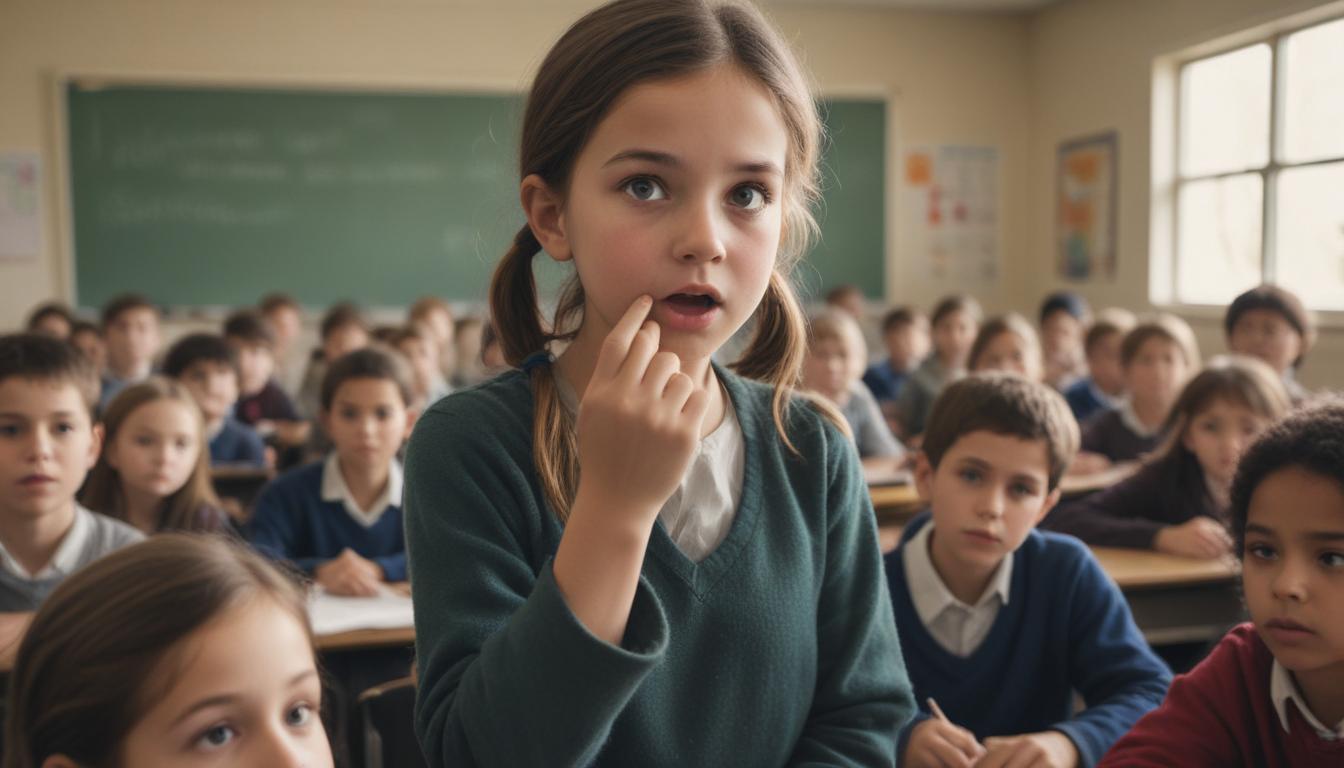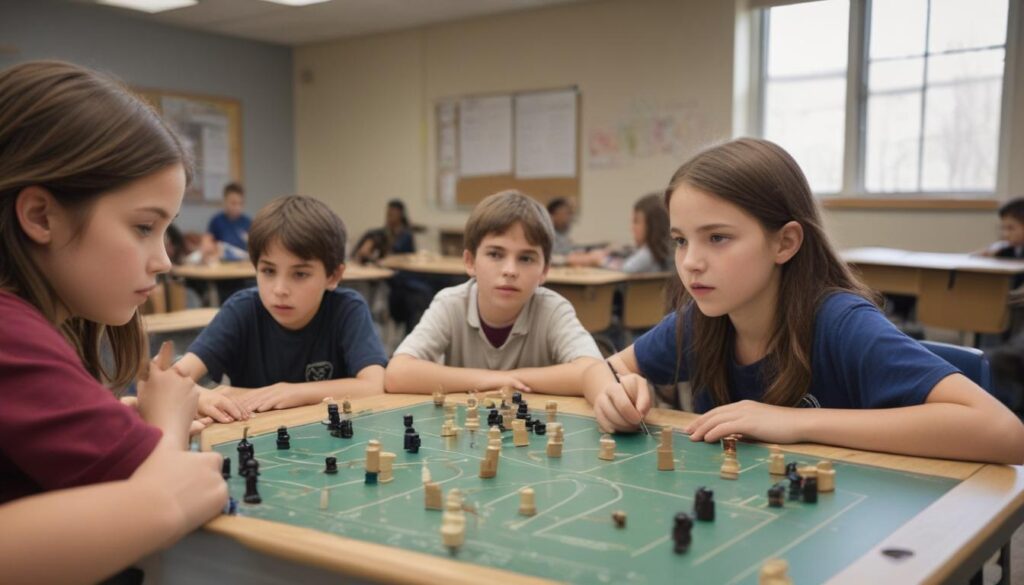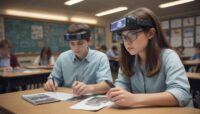Now Reading: Unlock Learning with Classroom Storytelling
- 01
Unlock Learning with Classroom Storytelling
Unlock Learning with Classroom Storytelling

The Power of Storytelling in the Classroom
Do you ever look out at your students and see a sea of glazed-over eyes? You have poured your energy into crafting a detailed lesson plan, but the information just isn’t landing. The silence is met not with thoughtful contemplation, but with the quiet hum of disengagement as students watch the clock, waiting for the bell. This is a common pain point for educators everywhere. You know the material is important, but how do you make it stick? How do you transform passive listeners into active, enthusiastic learners?
The solution is as ancient as humanity itself and more powerful than any new-fangled technology. It is the art of storytelling. By weaving narratives into your teaching, you can unlock a level of student engagement and comprehension you thought was impossible. Storytelling isn’t just for English class or elementary school read-alouds; it is a dynamic pedagogical tool that can revitalize any subject, at any grade level. It is the key to transforming your classroom from a place of information delivery into a world of discovery, connection, and lasting knowledge.
Why Narrative Learning Captivates the Brain
When you present students with a list of facts or a complex formula, you are activating the language-processing parts of their brain, like Broca’s and Wernicke’s areas. While necessary, it is a limited neural experience. However, when you tell a story, you light up the brain like a pinball machine. A well-told tale engages not only the language centers but also the sensory cortex. Describing the smell of gunpowder in a history lesson or the rough texture of a rock in a geology class causes the listener’s brain to simulate those same sensations.
This multi-sensory engagement is supercharged by emotional connection. Stories are about characters facing challenges, making discoveries, and experiencing triumphs or failures. This emotional journey releases dopamine in the brain, a neurotransmitter associated with focus, motivation, and memory. When students feel an emotional stake in the content, they are no longer memorizing abstract data; they are internalizing a meaningful experience. This forges a powerful link between emotion and cognition, making the information stick long after the lesson is over.
Practical Ways to Weave Stories into Your Lessons
Integrating storytelling does not require you to become a professional author overnight. It is about shifting your perspective and finding the inherent narrative in the subjects you already teach. The goal is to provide context and meaning, turning abstract concepts into concrete, relatable experiences. With a little creativity, any lesson can become a compelling story that draws students in and makes them eager to find out what happens next.
This approach also fosters a more inclusive and dynamic classroom environment. It allows for different ways of understanding and expressing knowledge, moving beyond simple memorization. By making storytelling a regular part of your practice, you empower students to see the world not as a collection of isolated facts, but as an interconnected web of stories waiting to be discovered and told.

Frame Your Subject Matter as a Story
Every lesson has the potential to be a narrative with a beginning, middle, and end. Instead of presenting the formula for photosynthesis, tell the story of a single particle of light on a perilous journey from the sun to a leaf, where it helps create the energy for life. In history, do not just list the causes of a war; frame it as a story of rising tension between two characters (the nations), detailing the inciting incidents, the escalating conflict, and the ultimate resolution.
This narrative framework provides a natural structure for learning. The “plot” gives students a roadmap, helping them organize information logically and understand cause and effect. A math problem can be transformed from a series of numbers into a quest. For example, “Our hero, a baker, needs to figure out exactly how much flour to buy to bake 500 cookies for the king’s festival. If each batch of 20 cookies requires 3 cups of flour, what epic journey must her shopping list take?” This simple shift turns a procedural task into a mini-adventure, making it far more engaging and memorable.
Use Personal Anecdotes to Build Bridges
One of the most accessible storytelling tools is your own life experience. Sharing a brief, relevant personal anecdote can instantly humanize you and the subject matter. When teaching about perseverance, you could share a short story about a time you struggled to learn a new skill. When explaining a scientific principle, you might recall a moment from your childhood when you first saw it in action, like noticing condensation on a cold glass of water on a summer day.
These personal stories create powerful moments of connection. They show students that learning is a human process, complete with struggles, “aha” moments, and real-world applications. It tells them that you are not just a dispenser of information but a fellow learner. The key is to keep the anecdotes relevant and concise. They should serve as a bridge to the core content, not a distraction from it. This simple act builds rapport and trust, making students more receptive to the entire lesson.
Empower Students to Become the Storytellers
The ultimate goal is to move students from being consumers of stories to creators of them. This solidifies their understanding on a profound level and develops critical skills in communication, creativity, and empathy. After teaching a historical period, ask students to write a diary entry from the perspective of a person who lived through it. When studying a biological process, have them create a comic strip or a short animated video that tells the story of that process.
By becoming the storytellers, students are forced to synthesize information, consider different viewpoints, and organize their knowledge into a coherent narrative. They become active participants in their own education rather than passive recipients. This method is also fantastic for assessment, as it shows you not just what they know, but how deeply they understand it. You can have them work in groups to craft a story explaining a mathematical concept to a younger grade, forcing them to simplify and clarify their thinking in a powerful, lasting way.





































